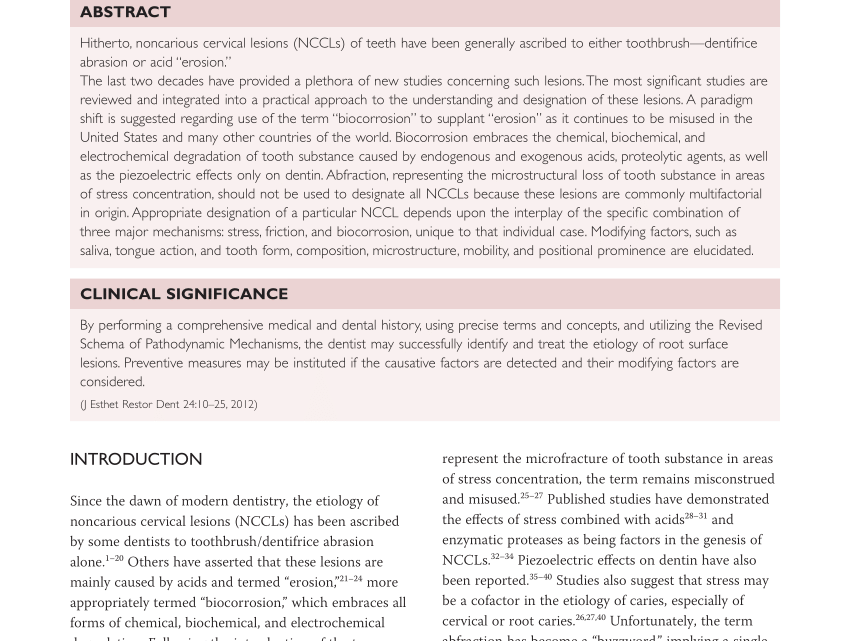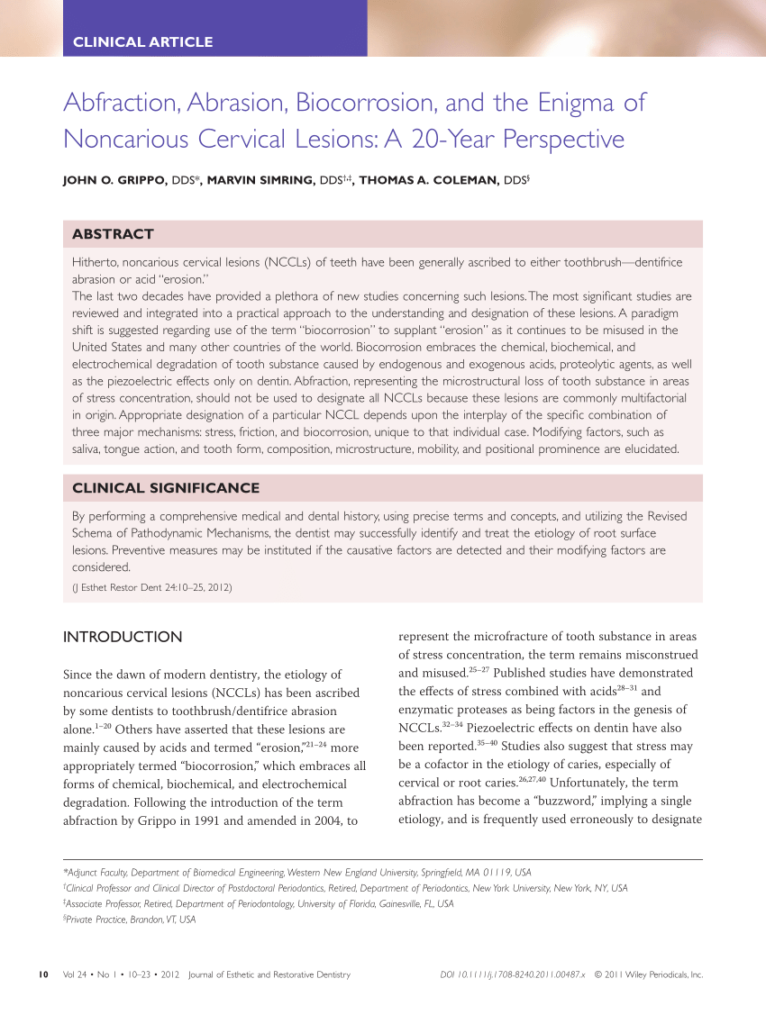
Abfraction, abrasion, biocorrosion, and the enigma of noncarious cervical lesions: a 20-year perspective
Abfraction, abrasion, biocorrosion, and the enigma of noncarious cervical lesions: a 20-year perspective. Grippo JO, Simring M, Coleman TA. (Messina AM in acknowledgements).
Journal of Esthetic and Restorative Dentistry
Abstract
Hitherto, noncarious cervical lesions (NCCLs) of teeth have been generally ascribed to either toothbrush-dentifrice abrasion or acid “erosion.”
The last two decades have provided a plethora of new studies concerning such lesions. The most significant studies are reviewed and integrated into a practical approach to the understanding and designation of these lesions.
A paradigm shift is suggested regarding use of the term “biocorrosion” to supplant “erosion” as it continues to be misused in the United States and many other countries of the world.
Biocorrosion embraces the chemical, biochemical, and electrochemical degradation of tooth substance caused by endogenous and exogenous acids, proteolytic agents, as well as the piezoelectric effects only on dentin.
Abfraction, representing the microstructural loss of tooth substance in areas of stress concentration, should not be used to designate all NCCLs because these lesions are commonly multifactorial in origin.
Appropriate designation of a particular NCCL depends upon the interplay of the specific combination of three major mechanisms: stress, friction, and biocorrosion, unique to that individual case.
Modifying factors, such as saliva, tongue action, and tooth form, composition, microstructure, mobility, and positional prominence are elucidated.
CLINICAL SIGNIFICANCE:
By performing a comprehensive medical and dental history, using precise terms and concepts, and utilizing the Revised Schema of Pathodynamic Mechanisms, the dentist may successfully identify and treat the etiology of root surface lesions.
Preventive measures may be instituted if the causative factors are detected and their modifying factors are considered.

